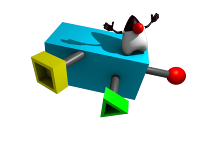
The utilities library consists of software to support development of Java and in particular Java EE applications. I started this in 2005 when I realized that it would be very nice to have a support library readily available instead of having to cut and paste from old code.
There are many purposes for this documentation:
See the links on the left side for information about various components of the utilities library.
Some parts in the utilities library may seem familiar to users of other popular frameworks such as Spring and Guice. This is not always a coincidence. It is my view that there many good IOC frameworks but that it is not a good idea to tie into any one of them specifically. Also, the support that one actually needs to develop applications and in particular enterprise applications efficiently only requires a few basic support utilities and typically not a big framework. Therefore, you will find a couple of small utilities that may be familiar in the functionality they offer to what is found in other frameworks.
Apart from this, there are many other interesting developments going on:
In particular, I believe that Java EE 6 with new powerful concepts such as singleton beans, lifecycle management, Contexts and Dependency Injection, used in combination with Enterprise OSGI will provide the most powerful way to develop applications in the future. In this. I am making only an exception for web frameworks to which I think JSF is not a good solution. I would use Wicket anyday if it were up to me.